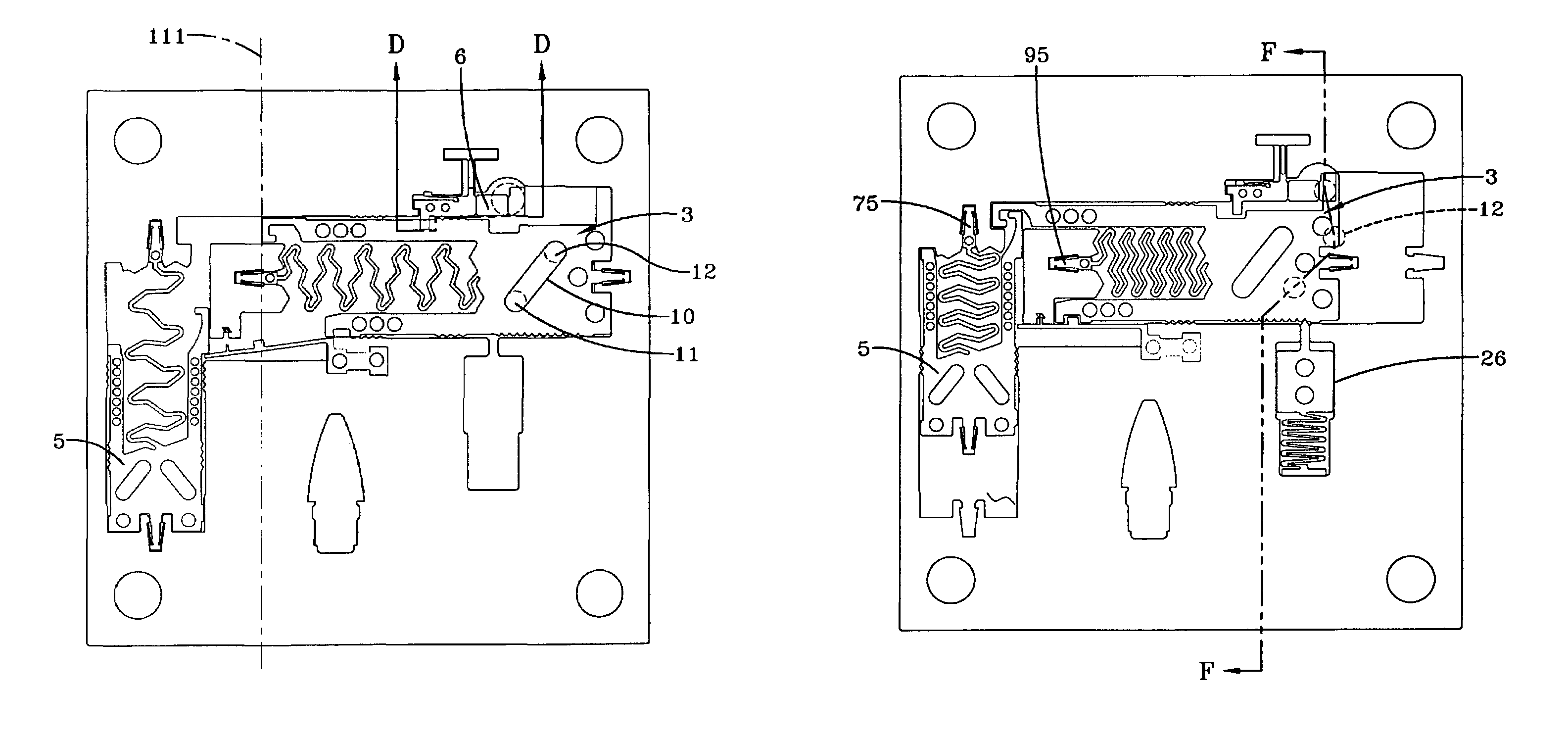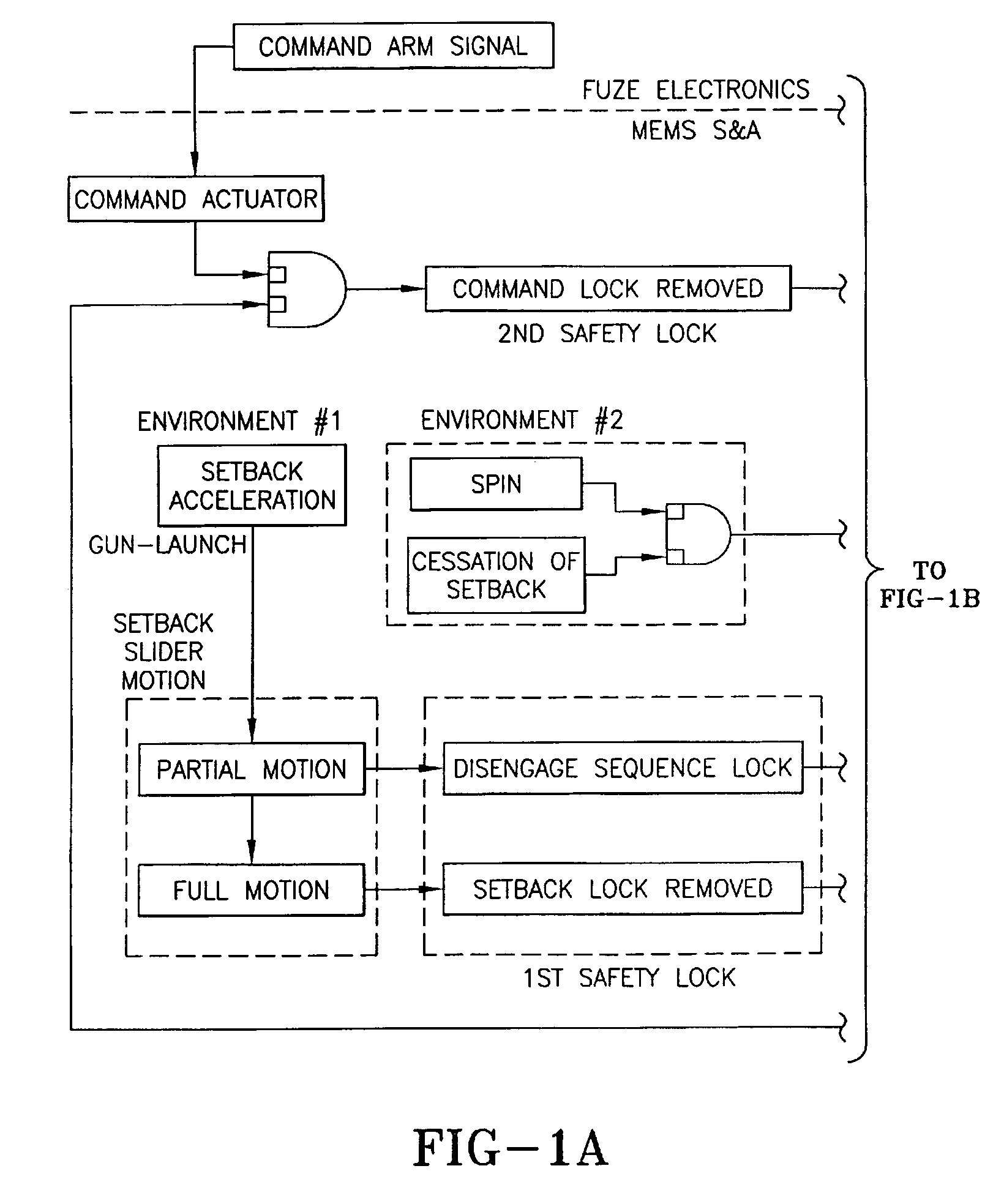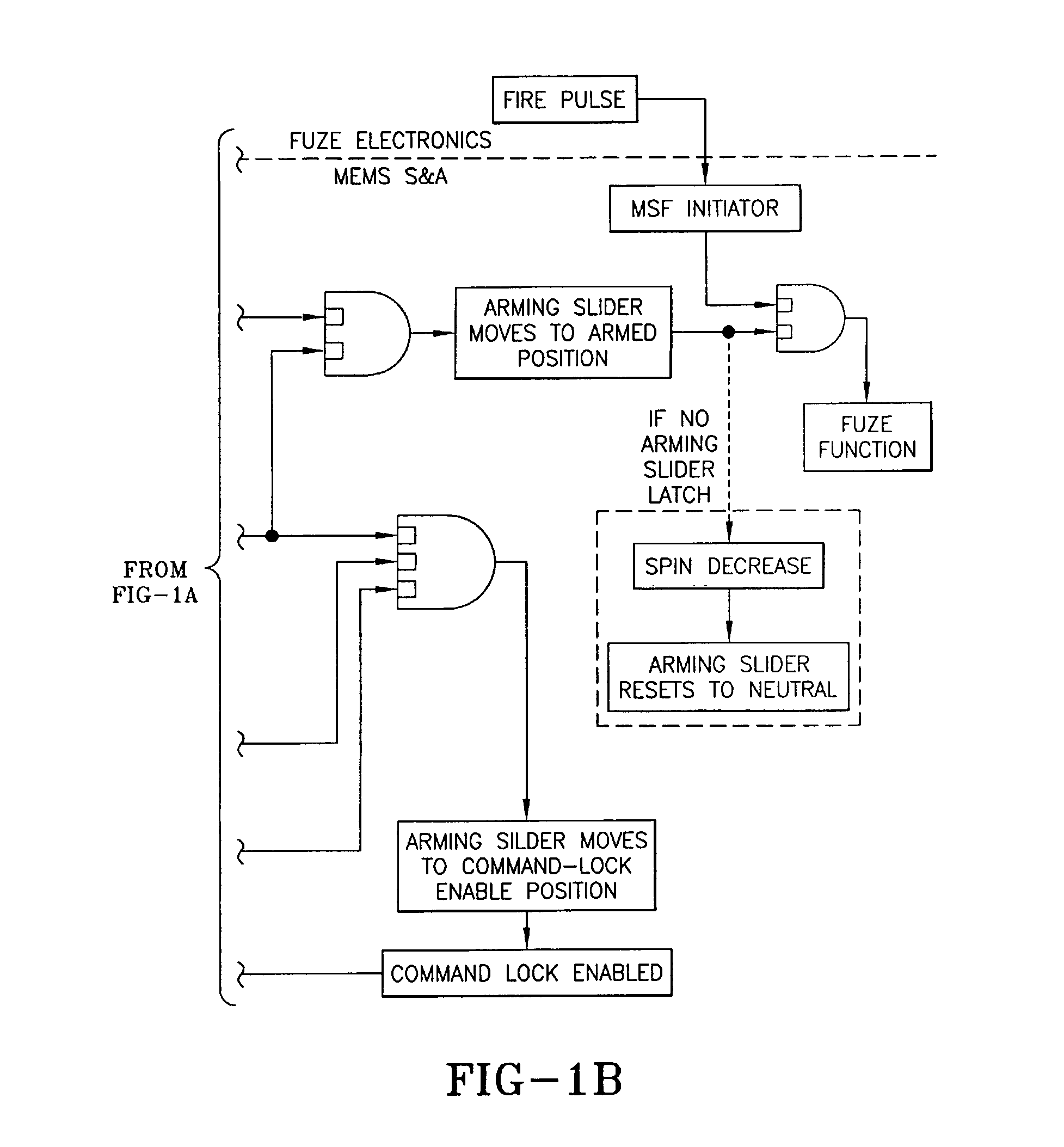Miniature MEMS-based electro-mechanical safety and arming device
a technology of electro-mechanical safety and arming device, applied in the field of ultra-miniature electro-mechanical safety and arming, can solve the problems of large cost and volume, increased lethality or payload simultaneous demands, and inability to meet medium-and-small-caliber artillery, etc., and achieve the effect of reducing cost, size and power requirements, and simplifying and safety
- Summary
- Abstract
- Description
- Claims
- Application Information
AI Technical Summary
Benefits of technology
Problems solved by technology
Method used
Image
Examples
second embodiment
[0133]Description of a Second Embodiment
[0134]A second embodiment of the invention is the same as the first embodiment as shown in FIG. 2A except that the end-of-travel arming slider latch head 36 and latch socket 25 are omitted. This omission has the effect that if the spin decays before the munition is functioned by the fuze, the arming slider 3 will be retracted to the safe (explosives out of line) position by the arming slider bias spring 9. This feature is indicated by the dotted line and box titled “If No Arming Slider Latch” in the block diagram of FIG. 1B.
third embodiment
[0135]Description of a Third Embodiment
embodiment 148
[0136]FIG. 21 shows a plan view of a reverse-bias S&A device for a non-spin munition launch. A third preferred embodiment 148 for non-spin munitions shown in FIG. 21 comprises an assembly similar to that of FIG. 2A but with a different arming slider 112. In arming slider 112 the location of the transfer charge pocket 149 and its associated input column 113 and output column 126 has been changed to accommodate a reverse-bias spring 114. Reverse-bias spring 114 is tensioned by extending its latch head 114a into reverse-bias spring latch head socket 115. Arming slider 112 includes arming slider latch 117 and arming slider latch socket 116.
[0137]This third embodiment 118 functions as a miniature MEMS-based electro-mechanical S&A for gun-launched munitions that are not spin stabilized. Munitions without spin stabilization lack a significant centrifugal acceleration-induced spin component to drive the arming slider 112 toward the armed position, so a spring force is substituted by this de...
PUM
 Login to View More
Login to View More Abstract
Description
Claims
Application Information
 Login to View More
Login to View More - Generate Ideas
- Intellectual Property
- Life Sciences
- Materials
- Tech Scout
- Unparalleled Data Quality
- Higher Quality Content
- 60% Fewer Hallucinations
Browse by: Latest US Patents, China's latest patents, Technical Efficacy Thesaurus, Application Domain, Technology Topic, Popular Technical Reports.
© 2025 PatSnap. All rights reserved.Legal|Privacy policy|Modern Slavery Act Transparency Statement|Sitemap|About US| Contact US: help@patsnap.com



